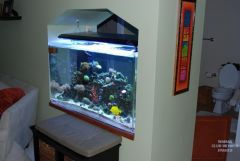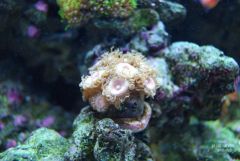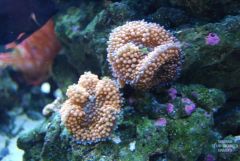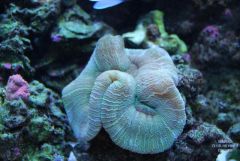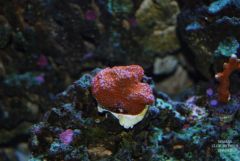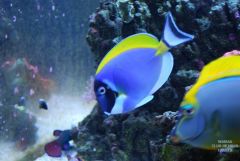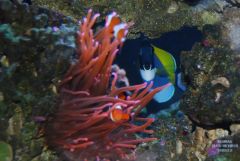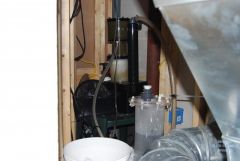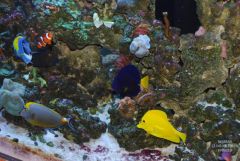-
Posts
380 -
Joined
-
Last visited
Content Type
Profiles
Forums
Gallery
Events
Store
Everything posted by Kimchi Corals
-
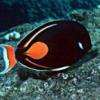
Red and Brown Algae on Sand
Kimchi Corals replied to civitan.erichanson's topic in General Discussion
Eric, If it is cyanobacteria I would wait to see if it is a self limiting event. I had a outbreak of cyano about 6 weeks ago and it covered the entire sand bed in the tank. I tried several interventions such as water changes, limited feeding for fish, red slime remover, Fighting conchs, limited lighting times, and increased flow. Of all these changes I recieved little or temporary reprevie from the cyano. However one thing did work.....Time. I have realized after much research that you must remove one of the necessary requirements of cyanobacteria to eliminate it. Those requirements include light, nuturients, and low flow. Now the challenge is to figure out which one is fueling the cyano outbreak. My cyano outbreak I believe was related to a large amount of organic nitrates in the tank due to the cycling process. My tank is about 7 months old now and I believe it is finally completing its cycle. This extended period of time is due to the fact that I used dead dry rock to create the aquascape in the tank and used 4 small pieces of live rock to seed the tank. Once the nitrates were gone so was the cyano. As suddenly as it appeared it quickly left as well. So here are a few questions. Did you add anything that may require a nitrogen cycle? How much are you feeding the fish and corals? To much will leave nutrients in the water remember the reef in the ocean has very little nutrients. How much flow do you have going to the region. Is your output from the protein skimmer adequate. The lighting period of 11 hours is fine for the reef. I have read several articles and books that suggest mimicing normal natural reef conditions. As an example hawaiian reefs get on average 10-12 hours of daylight year round. I have also read opionions that some aquarist run the lighting 8 hrs a day. I believe this saves on energy costs without adverse effect on the livestock of a reef and would be a good idea. However I really enjoy watching my tank without the aid of a flashlight or moonlights. Anyways, It would be a good idea to decrease the lighting times for your tank at this time but do it slowly, lets say decrease to 8 hours within a 1 week period. The bottomline to fix this problem is to manage the cyano by controlling its requirements. This is similar to the concept of putting out a fire. Fire requires heat, fuel, and oxygen. remove just one and BINGO no fire. Another thing to remember is that you will never get rid of the cyano you can only manage it from outbreaks. Also, the use of "reef safe" chemical remedies may jeopardize the health of everything in your reef. If you don't believe me just read the insert of the chemical. Hope this helps. PM me if you need some help or questions. John Yauger -
My chalices have done well with low light at the bottom of the tank. The flow is medium to low. I have enjoyed great growth from all of them with these conditions. Also, try to keep them away from other corals since many of these corals may be very aggressive. I don't spot feed them myself since I am trying to create a low nutrient system. John Yauger
-

Check out the 3 year timeline pictures of my tank!
Kimchi Corals replied to johnnybv's topic in General Discussion
absolutely stunning! Nice tank Johnny! John Yauger -
If you have small to medium flat pieces of live rock I will take them. I need them for a acan farm. Thanks John
-
I agree with the positives! I have had a great experience there! Tons of wonderful stuff. I would recommend Mr. Coral to all comers. Not to mention you have got to see the "miami hurricaine" In the display tank. John Yauger
-
Is the water above the kalk in the stirrer cloudy or clear? Especially when you first purchased the stirrer. Thanks john
-
I just recently got a new kalk stirrer. I have added about 1 inch of Kalk to the bottom and let it stir for 48 hours. The water above the kalk is still milky in color. This is different than the reactor I replace since the water was completely clear except when the pump mixed the kalk for 5 minutes every 24 hours. I am hesitate to connect it to the tank since I had a Kalk overdose once. Any experience would be great. Thanks John Yauger
-
I was told a really long time ago, when dinosaurs roamed the earth, "before you take on a project or hobby you should read everything you can get hands on". I recommend you read at least a few books on reef keeping and salt water aquariums before you get too far into this hobby. Here is a thread I started to figure out good books to read. http://www.wamas.org/forums/index.php?showtopic=21553 I have found that it is wise and less expensive to learn from others experiences and mistakes. This is particularly true with the expense portion, I have recently change my sump and pumps in order to account for a poor design that did not consider microbubbles created from fast and turbulent flow in the sump. I was very disappointed to say the least. Also, I started my tank just 6 months ago and I still consider my tank young. Your tank is still in an initial cycle period. This is a very important period of time for your tank. The reason for this is that your tank is a small ecosystem that requires both "oxygen using" aerobic and "non oxygen using" anaerobic bacteria to control waste products called ammonia, nitrite, and nitrates. These substances must be removed from the water since ammonia, nitrites, and only HIGH levels of nitrates is NOT compatible with life in your tank. As your system matures the bacteria grow to meet the supply and demand of waste products your tank. This can take a very long time. Once your tank has reached a stable point or balance the water quality will improve along with frequent water changes and effective protein skimming. Anenomes require this excellent water quality to survive in capativity. This also is especially important since you have a 12 gallon tank. Another phrase you should remember is "The solution to pollution is dilution". Your 12 gallon tank does not have the water volume to dilute out waste products or other potential problems and as a result it requires tremendous care and patience to prevent catastrophic results. Some test kits you should consider getting are as follows 1. pH, 2. Ammonia, 3. Nitrite, 4. Nitrate, 5. Phosphorus, 6. Calcium, 7. Alkalinity, 8. Magnesium. I would consider getting Salifert brand. Hope this helps. John Yauger
-
BRK is the best. Johnny and his staff can help you with anything. ou are just around the corner from me if you need anything just drop me a line. John yauger
-
Wish I was there!
-

My 90g Rimless Starphire Tank
Kimchi Corals replied to Gadgets's topic in Dedicated Tank (Build) Forum
Super nice Tank Chris! John Yauger -
What is a good brand of de humidifier. Thanks John Yauger
-
In my limited experience with reefing I have realized that good things happen slowly and bad things happen quickly. You may be better off just letting nature take its course instead of using an additive that may just be a placebo or worse yet cause harm to your reef and fish. Just my 2 cents. John yauger
-
weapon x is selling his right now
-
Wonderful pictures Khan!
-
Absolutely amazing. I can't believe it! THanks for the thread. John yauger
-
From the album: NAGA custom 180g
GREAT VIEW! -
From the album: NAGA custom 180g
Some of the survivors of the mass zoa death of my tank. -
From the album: NAGA custom 180g
5 total all larger than a silver dollar -
From the album: NAGA custom 180g
Pink Lemonade Chalice from 143gadgets and the Green brain from Yauger -
From the album: NAGA custom 180g
Not quite so blue since the Kalk overdose but it still looks great. -
From the album: NAGA custom 180g
Looking for food. -
From the album: NAGA custom 180g
Powder blue curious on what I am doing -
From the album: NAGA custom 180g
This is where the protein skimmer, Kalk reactor, ATO, RODI, and UV sterilizer are stored -
From the album: NAGA custom 180g
Fish for the tank include Blonde Naso Power blue 2 Lawnmower blennies Mandarin Purple tang Yellow Tang 6 line wrasse kole tang



